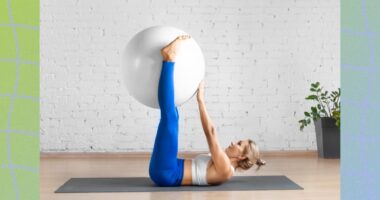
The goal of laser vision correction (LVC) is to eliminate or reduce the need for glasses and contact lenses. LVC treats three basic refractive errors: myopia (nearsightedness), astigmatism (blurring of vision due to non-spherical shape of the eye), and hyperopia (farsightedness).
During an LVC procedure, the cornea — the clear dome on the surface of the eye — is reshaped in order to correct the refractive error. The different techniques to perform LVC are laser in situ keratomileusis (LASIK), phototherapeutic refractive keratectomy (PRK), and small incision lenticule extraction (SMILE).
LASIK and PRK
LASIK, the most commonly performed laser vision correction procedure in the US and the most famous of the techniques, was approved by the FDA in 1998. It is well known for its quick recovery. LASIK combines the application of excimer laser and a hinged corneal flap. The excimer laser is a computer-controlled laser that allows precise control over the amounts of tissue that are removed from the cornea. The corneal flap is a layer of the cornea that is folded back to provide access to a deeper layer of the cornea that is reshaped by the excimer laser during the procedure.
LASIK has a much quicker and more comfortable recovery compared to PRK. After LASIK, patients typically experience a scratching and burning sensation that significantly improves within one day. Most patients have excellent vision the day after LASIK. In the first week especially, patients need to be mindful of the corneal flap, which has a small chance of moving or dislocating with rubbing or hard blinking. Even months after the procedure, there is a small risk of flap dislocation with significant trauma.
The most common side effect or risk of LVC is dry eye. Typically, the dryness goes away within a week or two, but in other cases it can require ongoing treatment. The refractive surgeon should screen for dry eye at the preoperative consultation, and treat it prior to the procedure to reduce risk of chronic issues afterward. LASIK is thought to have a slightly higher risk of dry eye compared to SMILE and PRK.
PRK was approved by the FDA in 1995 and was the first type of LVC performed. During PRK, the outer layer of corneal skin cells is removed, followed by the use of the excimer laser to reshape the corneal tissue to correct vision. Patients typically experience 48 to 72 hours of scratching, tearing, burning, and light sensitivity after PRK, often requiring short-term pain medication. Most patients have functional vision during this time, and are able to drive and resume most activities by the fourth or fifth day after the procedure. The PRK recovery is longer and less comfortable than recovery after LASIK and SMILE. The main benefits of PRK are no flap and reduced risk of dry eye. PRK is an excellent option for patients with thinner corneas.
READ RELATED: Premature babies perform worse in secondary school, study finds
SMILE
The FDA approved SMILE, the latest advance in laser vision surgery, in 2016. It has been shown to be as effective and safe as LASIK, and it is currently available for the treatment of myopia and myopic astigmatism. SMILE combines advantages of PRK and LASIK: it requires only a small incision, does not require a flap, and has a quick, LASIK-like recovery, with the additional benefit of no postoperative restrictions.
With one laser and in approximately 30 seconds, a thin contact lens-shaped layer just beneath the surface of the cornea is created with the laser. This layer is then removed through a tiny 2–3 mm opening, and the surrounding tissues heal together. The procedure is extremely comfortable, with a quick recovery, and requires no postoperative restrictions (unlike LASIK and PRK). It also avoids any potential risk of flap complications, in contrast to LASIK. The SMILE procedure is growing in popularity, but it is currently not as widely available as LASIK and PRK in the US. As surgeons and laser centers continue to adopt the technology, the volume of procedures is expected to grow.
On the day of the SMILE procedure, as with LASIK, most patients experience a sensation that they have something in their eye, as well as tearing and burning for several hours afterward. Visual recovery is quite rapid, and after one to two days most patients have 20/20 vision. With no postoperative restrictions after SMILE, patients are back to all normal activities, including wearing makeup and working out, the next day. One downside of SMILE is that certain prescriptions, including farsightedness, cannot be treated. The most common risks of SMILE are over- or undercorrection of the prescription, dry eye, or more rarely, visual distortions including halos.
SMILE has become a first-choice option for many patients. Many police and army combat personnel are now choosing this flapless option.
Laser vision correction is generally safe and effective
Laser vision surgery is not without risks, and there are times when a patient will experience either an over- or undercorrection of their prescription, as well as issues with healing or dry eye. Everyone’s body can respond differently, and even in a single individual, the left eye may heal differently from the right eye.
Overall, however, all LVC techniques are predictable and safe, with excellent results and minimal risks. It is important to see an experienced surgeon for a consultation. He or she can recommend the best technique for each patient.
Source: Havard Health









